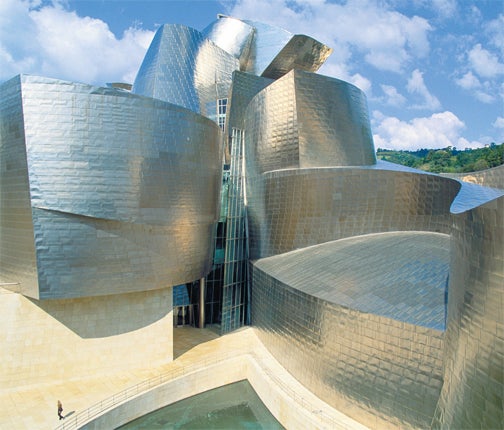Why bad design is cramping our style
A new TV series explores the impact the built environment has on the way we live. By Yvonne Cook

Feeling low? Trouble concentrating? Take a look at the building you’re in. If you live in an average-sized British home, or work in a typical office, you could be suffering from the effects of bad design. British homes have the smallest rooms and windows in Europe. British offices are increasingly open-plan. Evidence that both may be having a measurable impact on our moods, and even on our health, comes in The Secret Life of Buildings, a TV series which launched last night on Channel 4.
Co-produced by The Open University, it probes the effects of well- and badly designed buildings with a series of experiments that are both thought-provoking and entertaining. In one of these, the architecture critic Tom Dyckhoff, who is also the series’ presenter, sits in an ice bath to discover whether beautiful surroundings can reduce our perception of pain (they can); in another electrodes are strapped to his head to find out if deep concentration is possible in an open-plan office (it isn’t).
We also see Dyckhoff challenge some of today’s pre-eminent architects – Norman Foster, Richard Rodgers and Zaha Hadid – to defend their creations, by bringing them face-to-face with the people who actually use their buildings. The series’ academic adviser is the OU’s professor of design studies, Peter Lloyd. Although it is highly critical of the types of building design that many of us have to live with, Professor Lloyd says the series also offers hope: “We show examples of where things have been done differently. The message is: it doesn’t have to be like this.”
The three episodes of The Secret Life of Buildings cover home (broadcast last night), work and play. The “home” episode revealed that the average newly built British dwelling has just 76sqm of living space, compared with 136sq m in Denmark and 214sq m in Australia. This is probably not unconnected to the fact that since 1980 there have been no legal minimum size standards for homes in England and Wales. But it’s also explained by the British habit, exemplified by estate agents and house buyers, of assessing market value by counting bedrooms.
As Professor Lloyd explains: “In the UK we buy our houses on the number of bedrooms–we talk about a four-bedroomed or five-bedroomed house, but we don’t say how big those bedrooms are. In other countries, they go by the total floor space; houses are described as so many square metres, which is more exact.” UK homes are not only smaller, they’re darker. In one experiment, Dyckhoff is monitored as he tries living with the light levels provided by windows of what is described as the “smallest average” UK size.
After only a week, not only are his levels of stress and depression measurably higher, but his body clock is going adrift and, most alarmingly, his blood glucose levels have risen to the point where he’s borderline diabetic.
The second episode, on work, is likely to confirm the dark suspicions of many office staff. “The programme is very critical of open-plan working,” says Professor Lloyd. “The idea is that people interact freely which promotes communication and creativity, but there are downsides.”
The final programme, on play, looks at buildings where we spend our leisure time, such as museums and theatres – and finds many of them wanting, too, says Professor Lloyd. “We are designing these buildings to be iconic – take the Guggenheim in Bilbao as an example – that then act as a brand or a logo for a place. They’re glitzy, in your face, but they’re not about bringing us together as a society. There is too much focus on what’s outside instead of what’s inside.
“Successful public buildings – from Stonehenge to medieval churches to the Royal Festival Hall – are designed to bring people together meaningfully, to help us connect with one another.”
The Secret Life of Buildings was conceived to accompany The Open University’s first entry-level design course, “design thinking: creativity in the 21st century”, which was produced by a team chaired by Professor Lloyd. Although the TV series focuses on architecture it raises wider issues about the effect design has on our lives, he says. “Design isn’t just something which is applied to buildings or products, it is applicable in all sorts of contexts outside what you would consider the usual design disciplines – to management processes, for example.
“Design thinking is a really hot topic now, not just in design schools but in business schools. I think there is a growing appreciation of how it can fundamentally affect our day-to-day experience. In our Open University course we have tried to demystify design – not treating it as a rare artistic talent, but as something that can be taught, building on people’s natural creativity.
“And it is taught online, which is a real innovation, because traditional design teaching has been a studio-based and face-to-face process.”
More information about “design thinking: creativity for the 21st century” (U101) can be found here. The Secret Life of Buildings is on Channel 4 on Monday evenings at 8pm. More information and last night’s episode are available at www.open.ac.uk/openlearn/buildings
Join our commenting forum
Join thought-provoking conversations, follow other Independent readers and see their replies
Comments
Bookmark popover
Removed from bookmarks